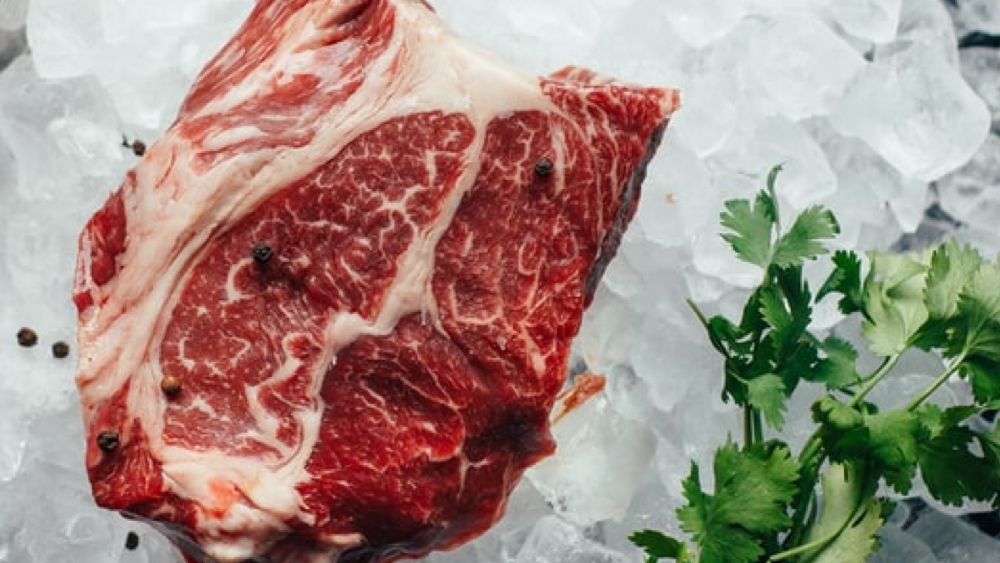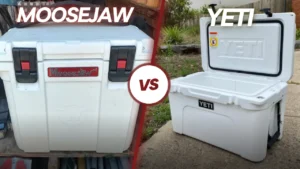Knowing how to travel with frozen meat allows you to transport wild-caught meat, adventure remotely for longer or to simply take meat over to a friend's place for a barbecue.
But what is the best way to travel with frozen meat and how do you keep it frozen for longer?
To travel with frozen meat pre-freeze your meat and stack it tightly in the bottom of a high quality cooler that you have pre-chilled. Fill any empty space with ice, ice packs or towels and keep the lid closed until you want to get the meat out.
It all comes down to preparation. If you prepare and pack your frozen meat correctly then it can stay frozen for days at a time. If you fail to prepare and pack your frozen meat correctly then it can get warm and spoil quite quickly.
Quick Tips: How To Travel With Frozen Meat
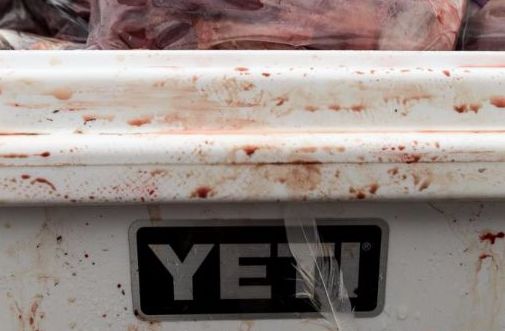
Here are the quick tips for how to travel with frozen meat:
1. Begin with an already chilled or room temperature cooler.
2. Use blocks of ice where possible.
3. Limit opening the lid and letting in warm air.
4. Quality of the cooler is critical.
5. Fill the void in between larger bags/blocks of ice with cubes.
6. Leave thawed water, don't tip out.
7. Use a foam camping mat to cover ice/food to lock in the cold.
The main point is that transporting frozen meat correctly is pretty easy and can keep your meat frozen for days at a time.
To do it incorrectly could be harmful to your health. If the meat gets too warm then bacteria can begin to grow spoiling the meat and making it unsafe to eat.
Leading us on to the next point…
What Is A Safe Temperature For Frozen Meat?
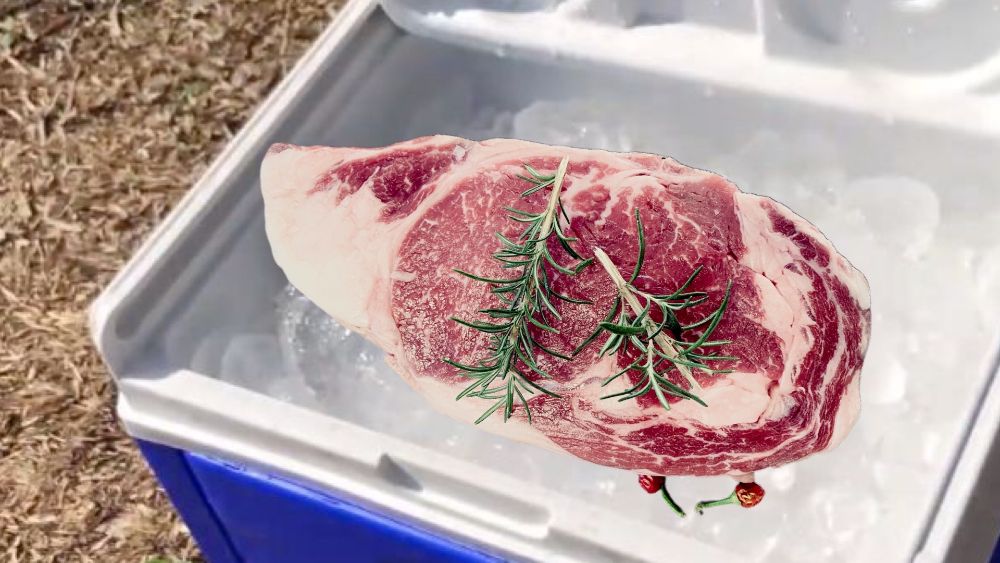
Keeping your meat called when traveling and not allowing it to thaw out is extremely important.
First of all, let's look at the safe temperature range that frozen meat can travel in.
According to the United States Food and Drug Administration (FDA):
“Food that is properly frozen and cooked is safe. Food that is properly handled and stored in the freezer at 0° F (-18° C) will remain safe.”
Wild meat in your freezer will stay at that temperature as soon as you put it in a cooler it will start to slowly warm up.
Do you want to keep your meat below 40ºF (4ºC) and if you do it can last a few days in a cooler without going bad. Once your meat thaws and goes above that temperature you should really cook in within a couple of hours or risk it going bad.
Pre-Freeze Your Meat Before Travel

One of the most important things to do when traveling with frozen food is to pre-freeze your meat before you travel. You don't want to rely on the ice in your cooler to keep your meat cold you want your meat to start out cold.
Place your meat in your freezer and give it time to completely freeze over before putting it in your cooler. Allow at least 24-48 hours for the meat to get down to the temperature of your freezer before placing it in cooler for travel.
This will ensure that once the meat is in the cooler, it is at the safe travel temperature. Additionally, it will help to keep the temperature of the cooler low.
Note: Ensure that your freezer temperature is set so that it complies with the FDA recommendation above.
Package Your Frozen Meat in Watertight Bags

Top food transport and logistics companies are mindful of maintaining food quality while in transit. It would be best if you kept this in mind too.
There are two main reasons you should package your frozen meat properly:
1. Freezer Burn. Occurs when frozen meat has been improperly packaged. Leaving air bubbles whilst wrapping, or not removing all air during the vacuum sealing process are primary causes.
2. Protect From Being Submerged in Melted Ice. As the ice melts the water will pool at the bottom of the cooler. If your meat comes into contact with the water, it could lead to spoiling it.
Two ways that you can package frozen meat whilst in transit are:
1. Zip-Lock Bags. This is the most straightforward and most cost-effective. As discussed above, if not done correctly, it may cause freezer burn. It is an excellent option if you are looking at only transporting meat 1-2 times a year.
2. Vacuum-Sealed Bags. This is how the professionals do it. While the cost is higher, the quality of the meat is almost guaranteed if done correctly.
Use a Good Cooler (Like Yeti, Kong etc.)

Quality of the cooler is critical. High-quality coolers retain ice for longer. This is mainly due to the type of insulation used. However, additional factors that influence cold retention are more effective gasket seals and closing mechanisms.
We have put together an excellent resource where we discuss the best coolers for ice retention; it's worth checking out.
Source the best cooler that you can, it's a long-term investment and one that will pay itself off quickly.
Pre-Chill Your Cooler Before Loading It

Pre-chilling your cooler is recommended by all the top cooler supply companies. This will alleviate the strain on your ice reserves in those first critical hours.
A practical way to pre-chill is to load up the cooler with sacrificial bags of ice. Alternatively, to keep costs down, you can use frozen bottles of water.
Tip: For best results, place your empty cooler in a deep chest freezer overnight. Prop the lid open slightly so that cold air can enter inside too.
Click here for more tips on how to pre-chill a cooler.
Pack Your Frozen Meat Densely Into The Bottom of the Cooler
Pockets of air are your enemy when it comes to retaining low temperatures in your cooler. Employ those ‘Master Tetris' skills and pack frozen meat as tightly as possible.
Alternate your stacking from horizontal to vertical if required.
If you have planned well, when preparing and packaging the meat, you would have condensed cuts into easily storable packets.
Fill Up Leftover Space with Ice Packs or Ice
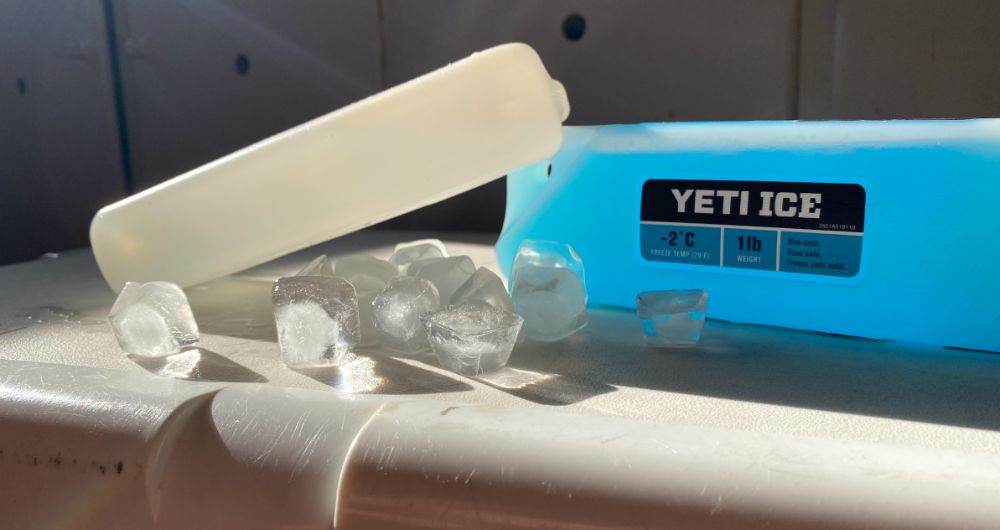
Following on from the recommendation above, source small ice packs and loose ice to fill voids.
NOTE: Loose ice is not allowed when flying, so consider this for your situation.
Leave Your Lid Closed
Don't be tempted to check on your frozen meat while in transit. Opening the lid will allow warm air to enter the cooler and will cause the ice to thaw faster.
Once the ice and meat are in your cooler, leave the lid closed!
Use Dry Ice To Keep Meat Frozen
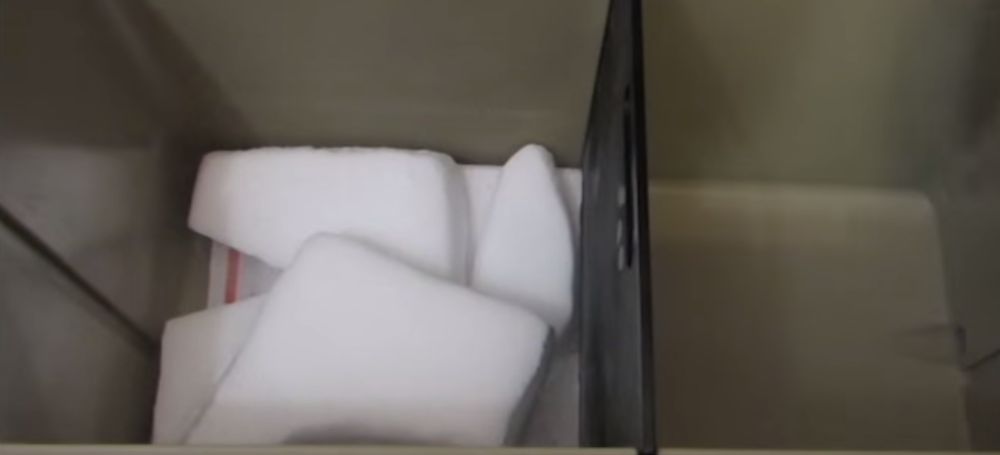
Source Dry Ice if you can. There is a massive temperature difference between dry ice and ‘warm ice'.
Dry ice is so cold that it will keep your meat completely frozen and will stop it from thawing out.
It also sublimates, or turns directly into a gas, which means you don't need to worry about your meat getting wet.
You do have to be careful of freezer burn and you also need to be careful when handling dry ice so you don't burn yourself but overall it's very easy to use.
Click here for some tips on how to use dry ice in a cooler and if you're looking for the right cooler to use dry ice in check out my list of the best dry ice coolers.
It's surprisingly easy to find dry ice suppliers these days – so this is becoming an accessible solution.
Extra Considerations
- Drain the water from the cooler. The water will pool at the bottom potentially wetting your food and air is better than water at keeping ice from melting.
- Avoid storing cooler in direct sunlight. If the cooler is out in the open for any time, cover it with a blanket.
How To Travel With Frozen Meat on an Airplane
Travelling with frozen meat on an aeroplane is one of the most common ways of transporting meat. The good news is that IT IS possible.
The principals of packing the cooler are the same as above, e.g. Pre-chill cooler, limit air pockets in cooler, don't open lid etc.
Tips
- As weight is a significant concern for check-in baggage cost, the best option is a lightweight styrofoam cooler.
- Source a cardboard box for the cooler to travel in. This will provide added protection for the cooler.
- To satisfy airline standards, you can't use loose ice cubes. You are required to pack with ice packs, gel pack or similar.
- If traveling internationally, you will be required to open the cooler. So take packing tape to the airport to seal after inspection.
Video Tips
In the video below, Dan Rockwell, discusses how he transported hunted deer meat from New York to Arizona.
Clay Hayes is a full-time legend. In the video below, he discusses tips on packing his Orion cooler to take across the country.
Wrapping It Up (Pun Intended)
Transporting meat the correct way takes proper planning; however, the advantages can be significant. For me, sharing wild-caught fish from remote Australia with friends and family was highly rewarding – and worth the effort!

